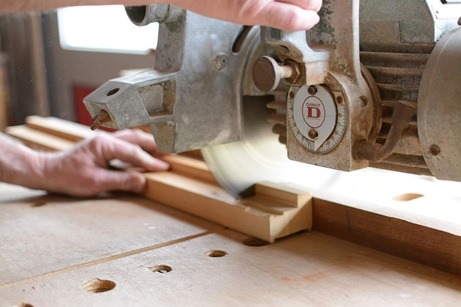Wooden projects are an excellent way to show your creativity, but there are many factors that you should know before you start. For example, if your project is going to have a lot of glue joints, it’s important to know how they’re made and what type of wood works best with the process. Besides this, you should also know how to protect your saw blade and sanding, and even how to work with different types of wood. This article will outline some most important tips for building a DIY wooden project, so let’s take a look.
1. Choose The Right Type Of Wood
It’s important to choose the right type of wood for your project, and this requires knowledge of which wood is best depending on the application. For example, if it’s a table or stool, you should use hardwood because it will be able to support heavy loads. Medium-density plywood is another good choice because it can be used for a wide range of applications, including outdoor projects, so you should invest in high-quality plywood if your budget allows it. There are some exceptions, though, such as projects where you’ll be putting heavy items on top of the finished piece. In this case, a medium-density fibreboard or MDF is better because it has superior strength and is about half the price of plywood.
2. Choose The Right Type Of Finisher
Finishers are a must for a DIY wooden project, especially projects that require a lot of sanding. For example, if you want your project to have a nice smooth surface, you’ll need wood filler and sandpaper before choosing the finisher. There are many kinds of finishes available on the market so it’s best to do some research about which one is best for the type of project you’re doing. For example, a water-based finish will dry fast and won’t yellow over time so it’s ideal for projects that need a smooth surface, but it requires proper ventilation to avoid making a mess. If you’re looking for a Polycrylic alternative, then a wiping stain would be your best bet. Choosing the right type of finisher is a must for a DIY wooden project, so make sure you do some research before starting.
3. Protect Your Saw Blade And Sanding
This is very important if your project requires a lot of sanding and sawing because it will save you from unnecessary strain. A simple way to protect your saw blade is to use masking tape to cover the teeth, and this will work for both circular saws and jigsaws. You should also try using a sanding block because it’s hassle-free and you’ll be able to get a good grip on the surface. If you’re doing the sanding yourself instead of hiring someone else, then invest in an oscillating sander because it’s a worthwhile investment.
4. Protect Yourself From Splinters And Other Injuries
It’s important to know how to protect yourself from splinters and other injuries that can happen while building a DIY wooden project. Before starting the application, you should wear gloves to protect your hands from splinters and even small injuries, especially when cutting wood with intricate details such as carvings. After applying the finisher and stain, you should wear a respirator because it will keep harmful toxins away from your respiratory system. Last but not least, you should also wear safety glasses to protect your eyes from splinters and debris.
5. Use The Right Kind Of Glue And Joints
It’s important to use the right kind of glue for every type of project because there are some types that aren’t suitable for certain kinds of projects. For example, if it’s a furniture piece like a table or cabinet, then you should use waterproof glue to keep the joints strong and sturdy. If it’s a carving, then you should choose super glue instead of epoxy because it dries faster. You should also know that there are two types of joints: butt joints and lap joints, so make sure you know which one is best for your project before you start applying them.
This article has gone over the basics of building a DIY wooden project, but it’s important to keep in mind that there are many other factors you should consider before starting. For example, do you have enough space for your project? Will the weather affect how long it will take to finish the application process? These are all things that need to be considered when planning out your next woodworking project. We hope this article has been helpful and we wish you all the best in your future endeavors.


